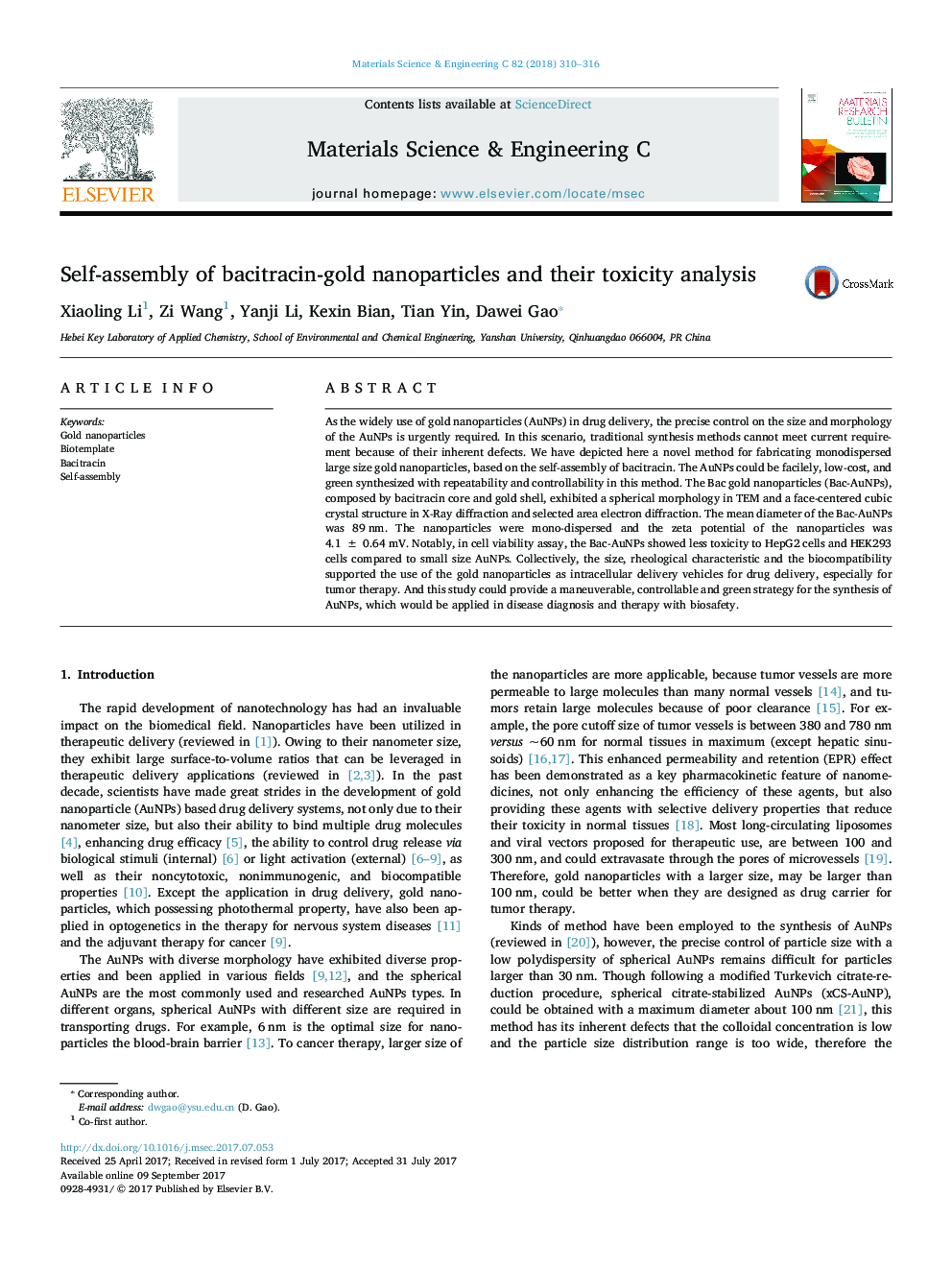| Article ID | Journal | Published Year | Pages | File Type |
|---|---|---|---|---|
| 5434191 | Materials Science and Engineering: C | 2018 | 7 Pages |
â¢A novel method for fabricating monodispersed large size gold nanoparticles (AuNPs)â¢Using bacitracin as template, the AuNPs could be facilely and green synthesized.â¢The Bac-AuNPs were more biocompatible to cells compared to small size AuNPs.
As the widely use of gold nanoparticles (AuNPs) in drug delivery, the precise control on the size and morphology of the AuNPs is urgently required. In this scenario, traditional synthesis methods cannot meet current requirement because of their inherent defects. We have depicted here a novel method for fabricating monodispersed large size gold nanoparticles, based on the self-assembly of bacitracin. The AuNPs could be facilely, low-cost, and green synthesized with repeatability and controllability in this method. The Bac gold nanoparticles (Bac-AuNPs), composed by bacitracin core and gold shell, exhibited a spherical morphology in TEM and a face-centered cubic crystal structure in X-Ray diffraction and selected area electron diffraction. The mean diameter of the Bac-AuNPs was 89 nm. The nanoparticles were mono-dispersed and the zeta potential of the nanoparticles was 4.1 ± 0.64 mV. Notably, in cell viability assay, the Bac-AuNPs showed less toxicity to HepG2 cells and HEK293 cells compared to small size AuNPs. Collectively, the size, rheological characteristic and the biocompatibility supported the use of the gold nanoparticles as intracellular delivery vehicles for drug delivery, especially for tumor therapy. And this study could provide a maneuverable, controllable and green strategy for the synthesis of AuNPs, which would be applied in disease diagnosis and therapy with biosafety.
Graphical abstract1.AtpH2, the template Bac peptide (Big blue ball) exhibited aspherical morphology, and carried large amount of positive charge (Red Balls) on the surface, which attracted a large number of [AuCl4]-(Yellow balls), and further formed high density gold nanoparticle clusters on the surface of Bac, the so called “seed”, after reduction by NaBH4.2.The “Seed” continuously bind gold nanoparticles (Yellow cubes), forming aspherical structure with porosity.3.The final nanogold exhibited a sepherical core-shell morphology, with a mean diameter of 89Â nm, and the wall thickness of the shell was 19Â nm.4.The gold nanoparticles showed little cytotoxicity to HepG2 cells.Download high-res image (154KB)Download full-size image
